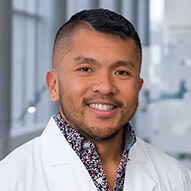Adolescent amenorrhea
Adolescent amenorrhea (amen·or·rhea) occurs when a female doesn’t have a menstrual cycle (period).
What is adolescent amenorrhea?
A young woman’s first menstrual cycle can begin anywhere from age 10 to 14. If they never occur, it is called ‘primary amenorrhea’. If they occur but then stop for at least 3 months, this is called ‘secondary amenorrhea’.
What are the different types of adolescent amenorrhea?
Primary amenorrhea occurs when a female doesn’t start her menstrual cycle by age 15.
Secondary amenorrhea occurs when a female’s period stops for three months or more.
What are the signs and symptoms of adolescent amenorrhea?
The main symptom of amenorrhea is a missing period.
Other symptoms (depending on the cause) can include:
Extra facial hair
Nipple discharge
Vision problems or changes
Lack of breast development and/o pubic hair
How is adolescent amenorrhea diagnosed?
Diagnosing amenorrhea starts with taking a good history and performing a thorough physical exam in clinic. This may involve an external pelvic exam and will likely not require an internal exam.
Depending on what is found, additional testing may be ordered and may include:
A urine pregnancy test
Blood tests
Imaging such as pelvic ultrasound or MRI
Minimally invasive procedures to look at your internal organs such as laparoscopy
What are the causes of adolescent amenorrhea?
There are a variety of reasons a female can have amenorrhea, including conditions that affect hormones or anatomy.
Causes include:
Polycystic ovary syndrome (PCOS) – this hormonal condition causes enlarged ovaries and cysts.
Pregnancy – periods stop during pregnancy.
Ovulation issues – a period can either be late or not occur due to irregular ovulation
Too little or too much body fat – abnormal amounts of body fat will cause ovulation problems.
Anatomical reasons – there are several physical abnormalities that impact the reproductive system, including imperforate hymen, missing uterus and and/or vagina.
Excessive exercise coupled with low body fat
Eating disorders – menstruation will stop if a girl’s body weight drops too low.
Premature menopause also called premature ovarian insufficiency (POI)
Hyperthyroidism or hypothyroidism (over or underactive thyroid) – the thyroid gland makes hormones that regulate metabolism, and imbalances will lead to menstrual issues.
Brain tumors – (extremely rare) if a girl develops a tumor in/on her pituitary gland (pituitary adenoma) or near it (craniopharyngioma), it can prevent ovulation and create hormone imbalances.
How is adolescent amenorrhea treated?
You daughter’s treatment will depend on the cause of the amenorrhea, but may include:
Watchful waiting
Lifestyle modifications such as changes to diet and level of physical activity
Hormonal medications
Surgery
Adolescent amenorrhea doctors and providers
 Nirupama De Silva, MDPediatric Gynecologist
Nirupama De Silva, MDPediatric Gynecologist Michele Gifford, MDPediatric and Adolescent Gynecology
Michele Gifford, MDPediatric and Adolescent Gynecology Jason Jarin, MDPediatric Gynecologist
Jason Jarin, MDPediatric Gynecologist